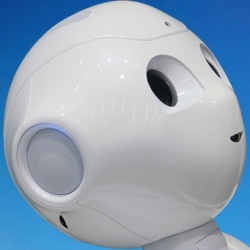
Artificial intelligence researcher and entrepreneur Ben Goertzel recently gave a talk at the Czech Institute of Informatics, Robotics, and Cybernetics on how to get to artificial general intelligence (AGI). Goertzel is one of the world’s foremost experts in Artificial General Intelligence.
He also has decades of expertise applying AI to practical problems in areas ranging from natural language processing and data mining to robotics, video gaming, national security and bioinformatics. He has published nearly 20 scientific books and 140+ scientific research papers, and is the main architect and designer of the OpenCog system and associated design for human-level general intelligence.
The talk (full video in original article) is pretty high-level, but does explore many facets of machine learning and AGI.
"We need to backward chain from the Singularity to the present and look forward chain from the present time toward what we are trying to achieve," states Goertzel.
He starts the talk with a review of the different approaches researchers are taking now to build AGI. Shane Legg, one of the founders of DeepMind, used to work for Goertzel, is following a biologically-inspired method, so far quite successfully.
Goertzel’s plan with his OpenCog project, and the offshoot startup Singularity.NET, is what he calls an "integrated approach." Part of the problem as well is that the AI field has siloed into discrete areas of study that do not interact with the other research focuses well enough.
OpenCog, part of the integrated approach, stores and manipulates knowledge in the form of complex graphs. Goertel thinks this is what the brain is doing at a very high level.
For Goertzel and his team, deep neural networks are only part of the solution to the problem of creating AGI. "The AI literature is also very long and deep, but there are also lots of other things of value in it," he quips. Despite all the hype around deep learning systems today, he states that only by integrating the other aspects of AI will human-level intelligence be recreated in silico.
